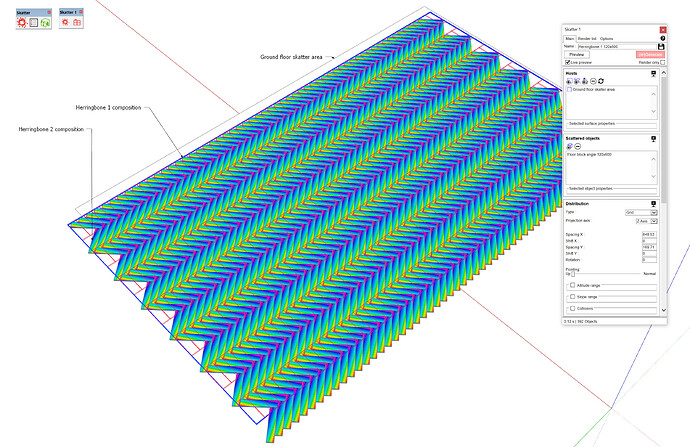Skatter is brilliant at random distribution of organic forms, but we use Skater’s grid to create flooring and paving and tiling within our models.
Typically we have to set up a new composition for each tile or floor plank.
With a herringbone floor, it’s only two. One for each floor plank. We can mirror and give a bit of rotation. Brick walls maybe 3 or 4.
We export to Octane where were can apply gradient ramps nodes to render out with random materials.
The object just has a uv map applied in SU.
The new convert to composition allows converting a layout to point distribution which i’d originally thought might simplify this process.
What would be a killer feature for me is to lay out the tiles/planks in a small area and for the plug in to make the grid distribution which I can then apply to different floor walls etc.
Profile Builder 3 has a similar function for its creation of assemblies. You layout the profile or components relative to the red axis and the automatic creation makes a good guess of the distribution of the elements.
It’s a massive time saver and means we use the plug in more. Even if we need to tweak after. 8 times out of 10 it nails it.
Boundary Clipping.
The other is the boundary for grid objects. If there was any way for the boundary to literally clip the object along the boundary, rather than have by origin point or object radius to limit the distribution. Oob tiles kind of does this, but with none of the parametric that skatter offers.
Even if there was an option where any part of the object is within the surface area it’s included would be a help.
At present, we get around this by oversizing our distribution areas and having a border that is a few mm higher to mask it.
Thank again for the great work.
